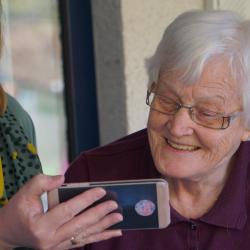Elevating Elderly Care and Dermatology: A Comprehensive Guide to Medical Billing Practices

As our population ages, the demand for specialized healthcare services, particularly in elderly care and dermatology, continues to grow. Ensuring that these crucial medical services are not only provided effectively but also appropriately billed is paramount for sustaining quality care. This comprehensive guide explores the nuanced landscape of medical billing in the realms of elderly care and dermatology, shedding light on the unique challenges, best practices, and the evolving role of technology in streamlining these processes.
Elderly Care: A Growing Imperative
The elderly population faces a myriad of health challenges, necessitating specialized care that extends beyond routine medical visits. From assisted living facilities to home healthcare services, the spectrum of elderly care is diverse and complex. People have questions such as who pays for congregate living health facility etc. Proper medical billing in this context is critical not only for healthcare providers but also for the elderly individuals and their families navigating a healthcare system that often involves multiple facets of care.
Challenges in Elderly Care Medical Billing
Medical billing in elderly care comes with its own set of challenges. The diverse range of services, from chronic disease management to palliative care, requires meticulous coding and documentation to accurately reflect the complexity of care provided. Understanding the nuances of Medicare and Medicaid billing is essential, as these programs are primary payers for many elderly individuals. Additionally, navigating the intricacies of long-term care insurance, supplemental insurance plans, and private pay arrangements adds layers of complexity to the billing process.
Best Practices in Elderly Care Medical Billing
Embracing best practices in medical billing for elderly care involves a multi-faceted approach. Accurate documentation of services, adherence to coding guidelines, and staying abreast of regulatory changes are foundational aspects. Utilizing electronic health records (EHR) systems that are tailored to elderly care settings can streamline billing workflows, enhance accuracy, and facilitate seamless communication among healthcare providers involved in the care continuum. Regular staff training on evolving billing practices is crucial for maintaining compliance and optimizing reimbursement.
Dermatology: Precision in Coding and Billing
Dermatology, with its focus on the skin, hair, and nails, plays a pivotal role not only in aesthetic concerns but also in the diagnosis and treatment of various skin conditions, including skin cancers. The complexity of dermatological procedures requires a keen eye for detail in coding and billing to ensure that providers receive fair compensation for their specialized services.
Coding Challenges in Dermatology Billing
Dermatology procedures often involve intricate coding, as they range from routine skin examinations to surgical interventions and cosmetic procedures. Accurate coding for skin lesion removal, biopsy techniques, and the classification of skin conditions is paramount for proper reimbursement. Moreover, as dermatology frequently intersects with cosmetic procedures, navigating the nuances of insurance coverage for medically necessary versus elective treatments adds an additional layer of complexity to billing processes.
Optimizing Dermatology Medical Billing
Efficient dermatology medical billing necessitates a proactive approach that begins with accurate documentation during patient encounters. Implementing electronic charge capture systems and integrating EHR solutions tailored to dermatology practices can streamline the billing process. Moreover, maintaining a vigilant eye on coding updates and staying informed about payer policies ensures that providers receive fair compensation for their specialized services. Regular audits of billing processes and ongoing staff education are crucial for compliance and financial optimization.
The Role of Technology in Elderly Care and Dermatology Billing
According to experts who write for us on finance and technology, In both elderly care and dermatology, the role of technology is increasingly pivotal in enhancing billing practices. Electronic health records not only facilitate seamless documentation but also offer robust tools for coding assistance and billing accuracy. Automated billing systems help in timely claim submissions and reduce the likelihood of billing errors. Telehealth technology, which gained prominence, especially in the wake of the COVID-19 pandemic, presents new opportunities for remote consultations and billing practices, particularly in elderly care where mobility can be a challenge.
As we navigate the intricate landscapes of elderly care and dermatology, meticulous attention to medical billing practices is fundamental to sustaining quality healthcare services. Understanding the unique challenges posed by these specialties, embracing best practices, and leveraging technology are key components of a successful billing strategy. Whether caring for the elderly or providing specialized dermatological services, the intersection of compassionate care and effective billing practices is where the foundation for a healthier future is laid. By continually adapting to evolving billing standards, healthcare providers can ensure that the elderly and dermatology patients receive the comprehensive care they deserve while maintaining financial sustainability in their practices.
More to Read:
Previous Posts:











